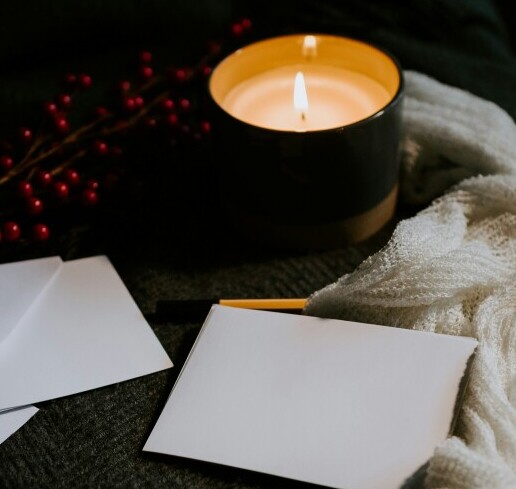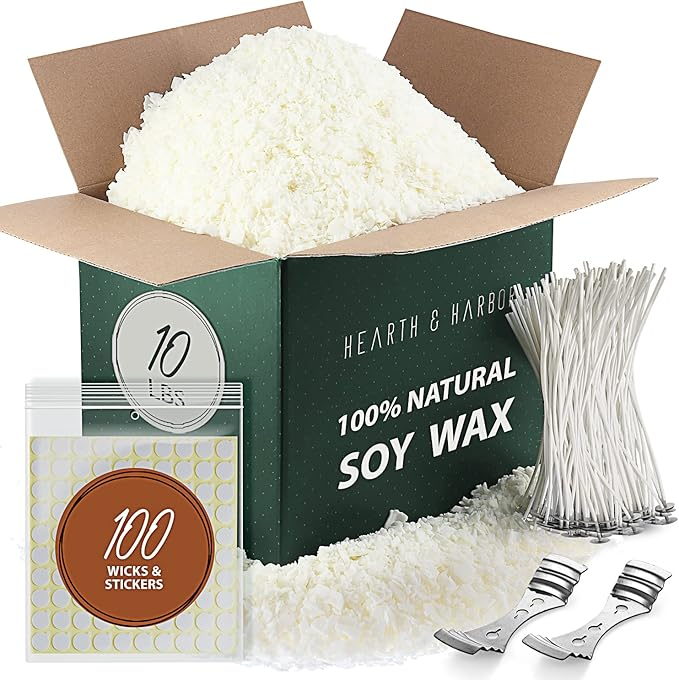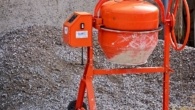From Wick To Wax: Understanding The Fundamentals Of Candle Production
The allure of candle making goes beyond simple light. It taps into nostalgia, evokes memories, and creates atmospheres. The crackling of a wick or the soft glimmer of a candle’s flame can transform a room, making it feel more intimate or even magical. Understanding candle production can deepen your appreciation for these small yet powerful elements in our homes.

As an Amazon Associate, I earn from qualifying purchases.
This post contains affiliate links. If you buy through them, I may earn a commission at no extra cost to you.
Candle making boasts a rich history, stretching back thousands of years. Our ancestors crafted them out of necessity, using materials like tallow and beeswax. Over time, what started as a basic need evolved into an art form, with innovations leading to the diverse variety we see today.
Gaining insights into candle production isn’t just for hobbyists—it’s essential for anyone invested in craftsmanship. Whether you’re a budding entrepreneur looking to enter the home goods market or a curious consumer wanting to know more about the products you love, the fundamentals of candle making can illuminate a world of possibilities beyond a simple flame.
The Heart of the Flame: Choosing the Right Wick
Choosing the right wick is crucial for creating a candle that burns beautifully and lasts. Not all wicks are created equal. They come in different materials like cotton and wood, each affecting how a candle burns and throws scent.
Cotton wicks are the go-to for many due to their consistent performance and versatility. They’re great for a wide range of waxes. For something a bit different, wood wicks offer a charming crackle sound, adding extra ambiance to the burning experience. Specialty wicks, such as those for gel candles, are specially designed to handle the unique properties of different waxes.
The size of the wick plays a more significant role than you might think. A wick that’s too large could lead to an unsightly sooty flame, while one that’s too small might drown in the wax pool, causing frustration when the candle refuses to stay lit. It’s a delicate balance.
Choosing the perfect wick involves factoring in the candle’s size, the type of wax you’re using, and the level of fragrance you want the candle to project. Testing different wicks is key to finding that sweet spot in your candle’s performance. Trial and error might take some time, but the reward is a candle that burns evenly and smells amazing.
The Core Component: Exploring Various Wax Types
Wax is the foundation of any candle, influencing burn time, scent throw, and even environmental impact. There are several types of wax to choose from, each bringing its own characteristics to the table.
Paraffin wax is one of the most common types in commercial candles. It’s known for its excellent scent throw and bright coloring ability. However, if you’re eco-conscious, you might prefer alternatives due to its petroleum base.
Soy wax is a popular choice among those looking for a more natural option. Derived from soybeans, it’s biodegradable and burns cleaner than paraffin, reducing the risk of soot staining your walls. It’s a softer wax, so it works well in container candles.
Beeswax offers a unique natural aroma and clean burn, often preferred by those who appreciate a more organic touch. It also produces negative ions when burned, which some believe can help purify the air. The downside is it can be costlier than other options.
Sustainability is a growing concern in the candle industry. When selecting wax, it’s worth considering its source and environmental impact. Recycled or sustainably harvested materials are increasingly available, offering choices that align with eco-friendly values without sacrificing performance.
Balancing the characteristics of each wax type with your priorities, whether they’re cost, fragrance performance, or environmental impact, can help you create the ideal candle for any setting.
Formulating the Perfect Blend: Additives and Fragrances
Additives and fragrances turn a basic candle into something extraordinary. They enhance both the candle’s performance and sensory appeal.
Fragrances are at the heart of a candle’s ambiance. Essential oils and fragrance oils can create anything from a calming lavender-infused bedroom to an energizing citrus-scented kitchen. The choice between essential and synthetic fragrances boils down to preference. Essential oils offer natural aromas, while synthetic options provide a wider range of scents.
Additives add more than just fragrance. They can optimize performance, improve appearance, or increase the longevity of the burn. Stearic acid, for example, is commonly used to harden the wax and extend the burning time—great for maximizers of value.
Fragrances require balancing to achieve the perfect aroma without overwhelming or underwhelming. The fragrance load needs careful calculation to ensure a scent that’s both noticeable and pleasant without creating issues like smoking or uneven burns. Testing a small batch before diving into full production helps fine-tune your mix.
Overall quality matters so going for high-grade oils and additives is often worth the investment to secure an even burn and lasting aroma throughout the candle’s life.
Crafting for Aesthetics: Dyeing and Shaping Candles
Adding color and shape turns candles into not just sources of light or scent, but also objects of beauty and art. The dyeing process is a critical step for those looking to infuse personality or fit a specific decor.
Dyeing wax offers endless possibilities. From subtle pastels to bold, vibrant hues, the choice of colors can dramatically alter the candle’s look and feel. Liquid, block, or powdered dyes all have different effects on the final product, with liquid offering precise control over shade intensity.
Beyond color, molds dictate the final shape of your candle. Tapers, pillars, or elaborate themed designs each require different molds, from simple tubes to intricately detailed forms. Silicone molds are particularly popular for their ease of release and variety of available shapes.
For those wanting to push the creative limits, advanced techniques such as layering or embedding can transform candles into miniature art pieces. Layering involves pouring different colored waxes at different stages, while embedding involves adding objects like dried flowers or even smaller candles within the main body. These techniques invite a unique charm and depth, offering endless ways to personalize.
Aesthetically pleasing candles don’t just look good— they enhance overall atmosphere, making their crafting well worth the extra time and effort.

The Art of Precision: Effective Candle Pouring Techniques
Pouring is where all your efforts in preparing wick, wax, and fragrance come together. It’s a step that requires attention to detail and a steady hand to achieve professional results.
Temperature is crucial here. Pouring at the right temperature for your chosen wax is key to reducing flaws such as frosting and air bubbles. Each type of wax has its optimal pouring range, so checking the manufacturer’s guidelines can make all the difference.
Pouring steadily also helps avoid unwanted patterns or air pockets in the candle. Using a thermometer and a slow-pour technique ensures that the wax sets correctly, leading to a smooth and even surface.
If layering is your goal, patience is essential. Allow each layer to set properly before pouring the next. This prevents colors from mixing and maintains distinct layers for that multi-hued effect.
Advanced pouring methods, like the embedding technique, allow the inclusion of decorative items in your candles. These methods require precision and quick decision-making to prevent the wax from setting prematurely around or over the embellishments.
Taking the time to perfect your pouring technique can dramatically enhance the aesthetic and functional quality of your candles, resulting in a finished product that burns beautifully and admirably blends artistry with functionality.
Safety First: Ensuring Quality and Compliance
Safety is non-negotiable in candle making, whether you’re crafting at home or manufacturing on a larger scale. Adhering to quality standards and regulations safeguards both the creator and the consumer, reducing the risk of accidents.
Understanding safety standards is vital. Organizations like the ASTM International provide guidelines focused on candle safety, which include wick length control, burn testing, and ensuring proper labeling. Following these standards is indispensable to prevent hazards.
Burn testing helps identify potential issues, such as excessive mushrooming (soot build-up on the wick) or uneven burning. This step lets you refine your formula to ensure a cleaner burn and prevent safety problems.
Another layer of safety involves packaging and labeling. Clear instructions on usage and warnings about risks like fire hazards or not leaving candles unattended protect the end user. Even small reminders, such as using candles in well-ventilated areas, can significantly increase safety.
Regulatory understanding is important for commercial endeavors. Different regions have unique requirements for candle labeling and ingredient disclosure, so staying informed helps maintain compliance, builds consumer trust and keeps safety at the forefront.
By prioritizing safety and compliance, you’re not only protecting your customers but also enhancing the reliability and reputation of your candle creations.
Sustainable Spark: The Future of Candle Manufacturing
The search for sustainability in candle manufacturing is more important than ever. As consumers become more environmentally conscious, the demand for eco-friendly products pushes manufacturers to innovate.
One of the key trends involves sourcing sustainable materials. Beeswax remains a favorite, but plant-based alternatives like coconut, soy and rapeseed wax are growing rapidly in popularity. These options provide environmentally friendly choices that still boast excellent burning properties.
Another shift is the move towards refillable and reusable candle containers. This approach reduces waste and appeals to a sustainable ethos, allowing customers to enjoy their favorite scents without discarding the packaging.
Contact Us
We hope you found this information on [focus keyword] helpful! If you have any questions or need assistance, feel free to reach out. Please note that due to government regulations, you’ll need to sign in and confirm your message. We apologize for any inconvenience.
Author: Rob












Hey Rob –
I enjoy lighting candles to enhance the aroma in a room. The scents appear to be endless, depending on which business you choose. This blog enlightened me on how candles are made, types of wax, and how fragrances are added. I did not know pouring was so involved, from the temperature to embedding techniques.
What trends are currently shaping the candle industry?
Hi Godwin,
Glad you found the post interesting. And yes, candle wax is a little sensitive to heat, and it is very important to stay as close to the recommended temperature as possible. Discoloration or aroma loss are just 2 of the possible side effects.
Rob
Hello Rob!
Candle-making is such a fascinating blend of science and creativity! I love how you broke down the fundamentals, especially the importance of choosing the right wick and wax for different burn times and scents.
Do you have a favorite type of wax for achieving a long-lasting, even burn? What’s the best way to prevent common issues like tunneling or frosting in homemade candles? This is a hobby that I have long admired but never dove into yet.
Thanks for sharing these insights—I’m feeling inspired to try making my own candles!
Angela M 🙂
Hi Angela,
Candles can certainly set the mood, especially when you have made them yourself. I am still experimenting with blends of waxes, so I can move further away from paraffin waxes.
Rob